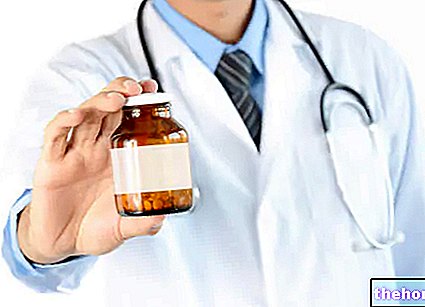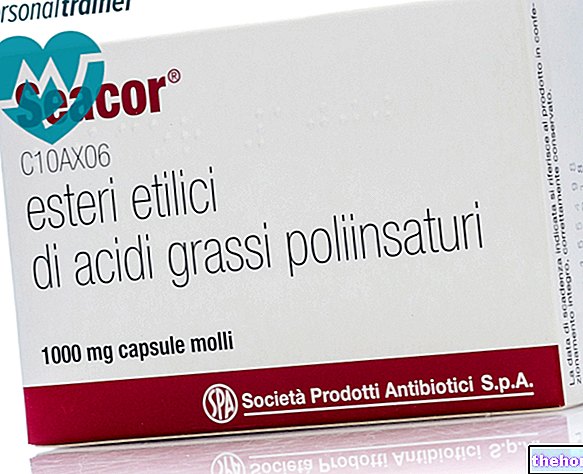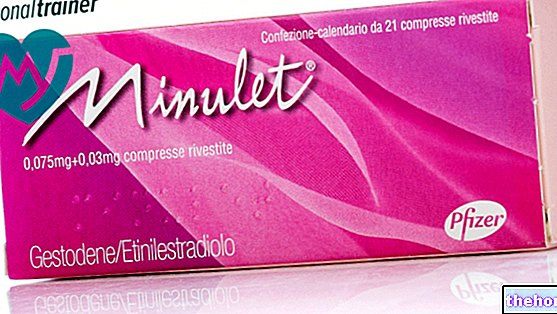Active ingredients: Salbutamol, Ipratropium bromide
NAOS 1.875 mg / 0.5 ml + 0.375 mg / 0.5 ml solution for nebulisation and for oral use (in single-dose containers)
NAOS 0.375% + 0.075% solution for nebulisation and for oral use (in multidose bottle)
Indications Why is Naos used? What is it for?
PHARMACOTHERAPEUTIC CATEGORY
Adrenergics and other drugs for obstructive respiratory tract syndromes (anti-asthma).
THERAPEUTIC INDICATIONS
Treatment of bronchial asthma and obstructive bronchopathy with asthmatic component; when it is indicated to associate an anticholinergic to the ß-adrenergic.
Contraindications When Naos should not be used
Hypersensitivity to the active ingredients or to one of the excipients of the product. Severe heart disease.
Glaucoma. Prostatic hypertrophy. Syndromes of urinary retention and intestinal obstruction.
Precautions for use What you need to know before taking Naos
Sympathomimetic agents should be used with great caution in patients who may be particularly susceptible to their effects.
In patients with diseases such as coronary heart disease, arrhythmias, arterial hypertension and in patients with glaucoma, hyperthyroidism, pheochromocytoma, diabetes and prostatic hypertrophy, the product should be used only in case of absolute necessity and only after careful evaluation of the risk / benefit ratio.
Even severe hypokalaemia can result from therapy with ß2-agonists, especially in the case of parenteral administration and by nebulization. This effect can be enhanced by concomitant treatment with xanthine derivatives, steroids, diuretics and by hypoxia. It is recommended, in such situations, to regularly check serum potassium levels.
Interactions Which drugs or foods can modify the effect of Naos
Concomitant use of ß2-agonist drugs and non-selective ß-blockers, such as propranolol, should normally be avoided.
Even severe hypokalaemia can result from therapy with ß2-agonists, especially in the case of parenteral administration and by nebulization. This effect can be enhanced by concomitant treatment with xanthine derivatives, steroids, diuretics and by hypoxia (see also "Precautions for use").
Warnings It is important to know that:
The solution in the multidose bottle contains para-hydroxybenzoates which can cause allergic reactions (generally delayed type) and exceptionally bronchospasm.
If the patient has heart disease or angina, he should inform his doctor before starting therapy with salbutamol.
Use in pregnancy and during lactation.
The use of the product during pregnancy and breastfeeding is not recommended.
Effects on ability to drive and use machines
Although in rare cases, it is possible the appearance of vertigo or disturbances in the accommodation of vision. This must be taken into account by those who are preparing to drive a vehicle or use machinery.
For those who carry out sporting activities
The use of the drug without therapeutic necessity constitutes doping and can in any case determine positive anti-doping tests.
Dosage and method of use How to use Naos: Dosage
Use with nebulizers
Adults
For inhalation with electric nebulizers, for outpatient or home use
Dilute 5 drops with 2 ml of distilled water or sterile physiological solution.
Duration of nebulization: 10 - 15 minutes, to be repeated 2 - 3 times a day.
For inhalation with electric respirators (Intermittent Positive Pressure Breathing), for hospital use
It is possible to dilute 2 drops with 1 ml of distilled water or with sterile physiological solution: 6 inspirations;
alternatively,
dilute 2 drops with 5 ml: inhalation duration 2 minutes;
or dilute 1 drop with 5 ml: inhalation duration 10 minutes.
Children
Proportionally reduced doses, also depending on the symptoms.
Oral use
We recommend the use of NAOS diluted with water, even with sugar.
Adults
10 drops, 3-4 times a day
Children
In the opinion of the Doctor and indicatively:
Infants from 1 to 3 months: 1 - 3 drops 2-3 times a day.
Infants from 3 to 12 months: 2 - 4 drops 2-3 times a day.
Children from 1 to 3 years: 3 - 5 drops 2-3 times a day.
Children from 3 to 6 years: 4 - 6 drops 2-3 times a day.
Children from 6 to 12 years: 5 - 7 drops 2-3 times a day.
Instructions for Use
Single-dose containers:
To open the single-dose container, twist the cap.
Multidose bottle:
To prevent the bottle from being easily opened, a dropper was used to open it, not an instinctive, but a rational movement.
To open the bottle it is necessary to exert a pressure on the dropper ring nut and a counterclockwise twist at the same time. To close the bottle, the ring nut must be screwed clockwise as usual.
Overdose What to do if you have taken too much Naos
In the event of an overdose, muscle tremors and increased heart rate may occur (see also "Undesirable effects").
Side Effects What are the side effects of Naos
The most commonly observed side effects are headache, cough and dry mouth.
Uncommon are local irritation, nervousness, nausea, dizziness, tachycardia, palpitations, muscle tremors and urinary retention.
Rarely, skin rash, hypersensitivity reactions such as urticaria, angioedema (localized to the tongue, lips and face) or anaphylactic reactions are observed; Reduction of potassium levels in the blood (see also "Precautions for use"); increase in intraocular pressure and disturbances in the accommodation of vision.
Always rarely and especially for high dosages, peripheral vasodilation may occur.
As with other inhaled drugs, paradoxical bronchospasm with increased wheezing soon after inhalation may occur.
Very rarely, some patients may experience chest pain (due to heart problems such as angina). You should inform your doctor as soon as possible, avoiding stopping therapy unless advised by a doctor.
Compliance with the instructions contained in the package leaflet reduces the risk of undesirable effects. It is important to inform the doctor or pharmacist of any other undesirable effect, even if not described in this leaflet.
Expiry and Retention
See the expiration date printed on the package. The expiry date refers to the product in intact packaging, correctly stored.
Store at a temperature not exceeding 25 ° C.
The contents of the single-dose container must be used immediately after opening; any residue must be eliminated.
After opening the aluminum wrapping containing the single-dose containers, they must be used within 7 days; after this period the residual single-dose containers must be disposed of.
The contents of the multidose bottle can be used within 28 days of first opening the bottle; after this period, any residue must be eliminated.
WARNING: do not use the medicine after the expiry date indicated on the package.
KEEP OUT OF THE REACH AND SIGHT OF CHILDREN
COMPOSITION
NAOS 1.875 mg / 0.5 ml + 0.375 mg / 0.5 ml solution for nebulisation and for oral use (in single-dose containers)
Each single-dose container contains:
Active ingredients: Salbutamol 1.875 mg (as Salbutamol Sulphate 2.25 mg)
Ipratropium Bromide 0.375 mg
Excipients: Water for injections.
A 0.5ml container is equal to 10 drops. One drop (0.05 ml) contains: 187.5 micrograms of salbutamol and 37.5 micrograms of ipratropium bromide.
NAOS 0.375% + 0.075% solution for nebulisation and for oral use (in multidose bottle)
100 ml of solution contain:
Active ingredients: Salbutamol g 0.375 (as Salbutamol Sulphate g 0.450)
Ipratropium Bromide g 0.075
Excipients: Ethyl-p-hydroxybenzoate, Methyl-p-hydroxybenzoate, water for injections.
PHARMACEUTICAL FORM AND CONTENT
Solution to be sprayed and for oral use. The NAOS solution can be straw yellow in color.
- Box of 30 single-dose containers of 0.5 ml;
- 15 ml multidose bottle.
Source Package Leaflet: AIFA (Italian Medicines Agency). Content published in January 2016. The information present may not be up-to-date.
To have access to the most up-to-date version, it is advisable to access the AIFA (Italian Medicines Agency) website. Disclaimer and useful information.
01.0 NAME OF THE MEDICINAL PRODUCT
NAOS
02.0 QUALITATIVE AND QUANTITATIVE COMPOSITION
NAOS 1.875 mg / 0.5 ml + 0.375 mg / 0.5 ml solution for nebulisation and for oral use (in single-dose containers)
Each single-dose container contains:
Active ingredients: Salbutamol 1.875 mg (as Salbutamol Sulphate 2.25 mg)
Ipratropium Bromide 0.375 mg
A 0.5ml container is equal to 10 drops. One drop (0.05 ml) contains: 187.5 mcg of salbutamol and 37.5 mcg of ipratropium bromide.
NAOS 0.375% + 0.075% solution to be nebulized and for oral use (in multidose bottle)
100 ml of solution contain:
Active ingredients: Salbutamol g 0.375 (as Salbutamol Sulphate g 0.450)
Ipratropium Bromide g 0.075
For excipients: see 6.1.
03.0 PHARMACEUTICAL FORM
Solution to be sprayed and for oral use
The NAOS solution can be straw yellow in color.
04.0 CLINICAL INFORMATION
04.1 Therapeutic indications
Treatment of bronchial asthma and obstructive bronchopathy with asthmatic component, when it is indicated to associate an anticholinergic to the β-adrenergic.
04.2 Posology and method of administration
Use with nebulizers
Adults
- For inhalation with electric nebulizers, for outpatient or home use
Dilute 5 drops with 2 ml of distilled water or sterile physiological solution.
Duration of nebulization 10 - 15 minutes, to be repeated 2 - 3 times a day.
- For inhalation with electric respirators (Intermittent Positive Pressure Breathing), for hospital use
It is possible to dilute 2 drops with 1 ml of distilled water or with sterile physiological solution: take 6 inhalations;
alternatively, dilute 2 drops with 5 ml; inhalation duration: 2 minutes;
or dilute 1 drop with 5 ml; inhalation duration: 10 minutes.
Children
Proportionally reduced doses, also depending on the symptoms.
Oral use
We recommend the use of NAOS diluted with water, even sweetened.
Adults
10 drops, 3-4 times a day.
Children
In the opinion of the Doctor and indicatively:
Infants from 1 to 3 months: 1 - 3 drops 2-3 times a day.
Infants from 3 to 12 months: 2 - 4 drops 2-3 times a day.
Children from 1 to 3 years: 3 - 5 drops 2-3 times a day.
Children from 3 to 6 years: 4 - 6 drops 2-3 times a day.
Children from 6 to 12 years: 5 - 7 drops 2-3 times a day.
04.3 Contraindications
Hypersensitivity to the active substances or to one of the excipients. Severe heart disease. Glaucoma. Prostatic hypertrophy. Syndromes of urinary retention and intestinal obstruction.
04.4 Special warnings and appropriate precautions for use
Sympathomimetic agents should be used with great caution in patients who may be particularly susceptible to their effects.
In patients with diseases such as coronary heart disease, arrhythmias, arterial hypertension and in patients with glaucoma, hyperthyroidism, pheochromocytoma, diabetes and prostatic hypertrophy, the product should be used only in case of absolute necessity and only after careful evaluation of the risk / benefit ratio.
Even severe hypokalaemia may result from therapy with β2-agonists, especially in the case of parenteral administration and by nebulization. This effect can be enhanced by concomitant treatment with xanthine derivatives, steroids, diuretics and by hypoxia. It is recommended, in such situations, to regularly check serum potassium levels.
The solution in the multidose bottle contains para-hydroxybenzoates which can cause allergic reactions (usually delayed type) and exceptionally bronchospam.
There is evidence from post-marketing data and published literature of rare cases of myocardial ischaemia associated with the use of salbutamol. Patients with pre-existing severe heart disease (eg, ischemic heart disease, tachyarrhythmia, or severe heart failure) who receive salbutamol for respiratory disease, they should be advised to inform their doctor if chest pain or symptoms of worsening heart disease occur.
04.5 Interactions with other medicinal products and other forms of interaction
Concomitant use of β2-agonist and non-selective β-blocker drugs, such as propranolol, should normally be avoided.
Even severe hypokalaemia may result from therapy with β2-agonists, especially in the case of parenteral administration and by nebulization. This effect may be enhanced by concomitant treatment with xanthine derivatives, steroids, diuretics and by hypoxia (see also 4.4).
04.6 Pregnancy and lactation
The use of the product during pregnancy and breastfeeding is not recommended.
04.7 Effects on ability to drive and use machines
Although in rare cases, the onset of vertigo or disturbances of visual accommodation is possible. This must be taken into account by those who are preparing to drive a vehicle or use machinery.
04.8 Undesirable effects
The most commonly observed side effects are headache, cough and dry mouth.
Uncommon are local irritation, nervousness, nausea, dizziness, tachycardia, palpitations, muscle tremors and urinary retention.
Rarely, skin rash, hypersensitivity reactions such as urticaria, angioedema (localized to the tongue, lips and face) or anaphylactic reactions are observed; hypokalemia (see 4.4); increased intraocular pressure and disturbed vision accommodation.
Always rarely and especially for high dosages, peripheral vasodilation may occur.
As with other inhaled drugs, paradoxical bronchospasm with increased wheezing soon after inhalation may occur.
Cardiac arrhythmias (including atrial fibrillation, supraventricular and extrasystolic tachycardia), myocardial ischaemia have been reported very rarely.
04.9 Overdose
In the event of an overdose, muscle tremors and increased heart rate may occur (see also 4.8).
05.0 PHARMACOLOGICAL PROPERTIES
05.1 Pharmacodynamic properties
ATC: R03AK04; pharmacotherapeutic category: adrenergics and other drugs for obstructive respiratory tract syndromes (salbutamol and ipratropium bromide).
The two active ingredients perform anti-bronchospastic activity with different mechanisms, namely: a β2-stimulant, such as Salbutamol, and an anticholinergic, such as Ipratropium bromide.
The mechanism of adrenergic-antivagal action allows to intervene directly on the pathogenetic moment of both spastic and hypersecretive bronchostruction allowing, on the one hand, a reactivation of the adrenergic receptors and, on the other, a reduction of the cholinergic potential.
The synergistic bronchial antispasmodic action of the preparation is determined by the specificity and by the different mechanism of action of the two components which would have an effect on the cyclic nucleotides of the smooth muscle cell: AMP and cyclic GMP, responsible for bronchial dynamics.
05.2 Pharmacokinetic properties
Kinetic studies show that salbutamol is rapidly absorbed from the gastrointestinal tract and gradually by inhalation, is excreted primarily via the urine, partly as unchanged salbutamol, partly as glucuronide or sulfate conjugate, and that Ipratropium bromide is absorbed to an extent modest for both oral and inhalation administration, it is partially metabolised and excreted by both the kidney and faeces.
05.3 Preclinical safety data
The two active ingredients show, in the most common laboratory animals, very low acute, subacute and chronic toxicity, so they are well tolerated for the administration routes used in human clinics even for high doses and much higher than those recommended or in any case achievable in the clinical practice.
By way of example, the LD50 intravenously in the rat of a solution consisting of 5 parts of Salbutamol + 1 part of Ipratropium bromide, is 34.85 mg / kg of Salbutamol + 6.97 mg / kg of Ipratropium bromide.
Parenteral administration of 750 mcg / kg of Salbutamol + 150 mcg / kg of Ipratropium bromide involves only modest toxic depressive symptoms.
06.0 PHARMACEUTICAL INFORMATION
06.1 Excipients
NAOS 1.875 mg / 0.5 ml + 0.375 mg / 0.5 ml solution for nebulisation and for oral use (in single-dose containers): Water for injections
NAOS 0.375% + 0.075% solution to be nebulized and for oral use
(in multidose bottle): Ethyl-p-hydroxybenzoate, Methyl-p-hydroxybenzoate, Water for injections.
06.2 Incompatibility
Not known.
06.3 Period of validity
3 years.
The contents of the single-dose container must be used immediately after opening; any residue must be eliminated.
After opening the aluminum wrapping containing the single-dose containers, they must be used within 7 days; after this period the residual single-dose containers must be disposed of.
The contents of the multidose bottle can be used within 28 days of first opening the bottle; after this period, any residue must be eliminated.
06.4 Special precautions for storage
Store at a temperature not exceeding 25 ° C.
06.5 Nature of the immediate packaging and contents of the package
NAOS 1.875 mg / 0.5 ml + 0.375 mg / 0.5 ml solution for nebulisation and for oral use (in single-dose containers).
Single-dose containers in low density polyethylene. 5 containers are sealed in an aluminum casing; then 6 aluminum sachets containing a total of 30 containers are packaged in suitable lithographed cardboard boxes, together with the illustrative leaflet.
NAOS 0.375% + 0.075% solution to be nebulized and for oral use (in multidose bottle).
Polyethylene bottle with dropper with polyethylene non-return valve (Lupolen 1840) in turn closed by a colored polypropylene screw cap. One bottle is packaged in a suitable lithographed cardboard box, together with the package leaflet.
06.6 Instructions for use and handling
Single-dose containers:
To open the single-dose container, twist the cap.
Multidose bottle:
To prevent the bottle from being easily opened, a dropper was used to open it, not an instinctive, but a rational movement.
To open the bottle it is necessary to exert a pressure on the dropper ring nut and a counterclockwise twist at the same time. To close the bottle, the ring nut must be screwed clockwise as usual.
07.0 MARKETING AUTHORIZATION HOLDER
MEDIOLANUM pharmaceuticals S.p.A. - Via San Giuseppe Cottolengo, 15 - 20143 Milan.
08.0 MARKETING AUTHORIZATION NUMBER
NAOS 1.875 mg / 0.5 ml + 0.375 mg / 0.5 ml solution for nebulisation and for oral use
30 single-dose containers of 0.5 ml AIC n. 036737029
NAOS 0.375% + 0.075% solution to be nebulized and for oral use
bottle of 15 ml AIC n. 036737017
09.0 DATE OF FIRST AUTHORIZATION OR RENEWAL OF THE AUTHORIZATION
October 26, 2007.
10.0 DATE OF REVISION OF THE TEXT
AIFA Determination: April 2008.




























